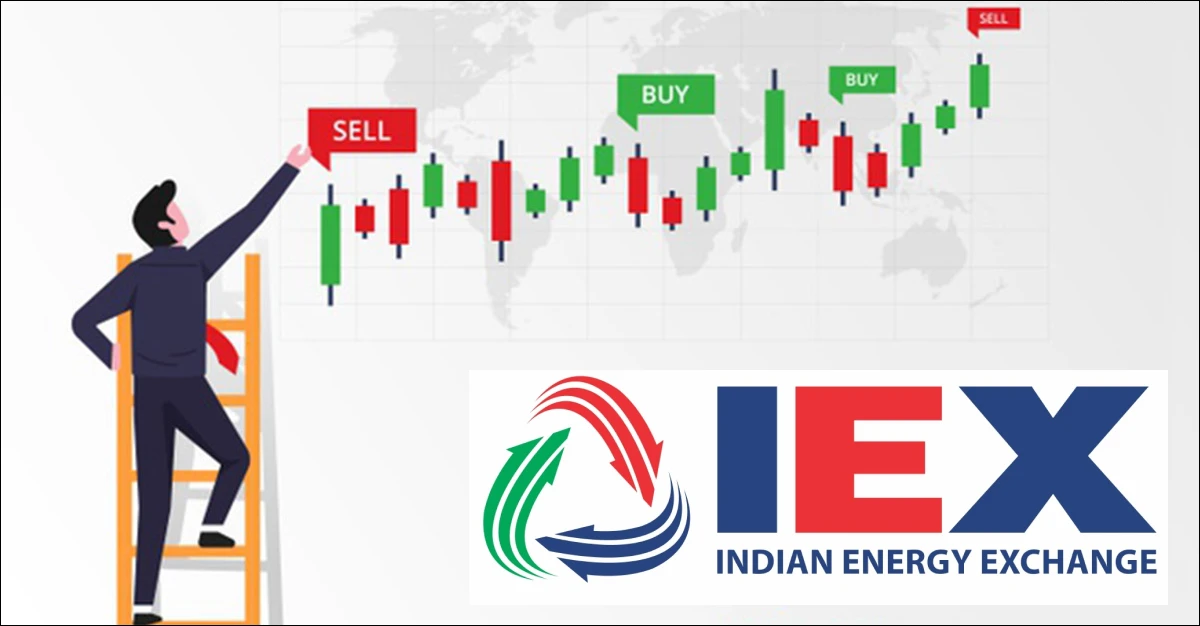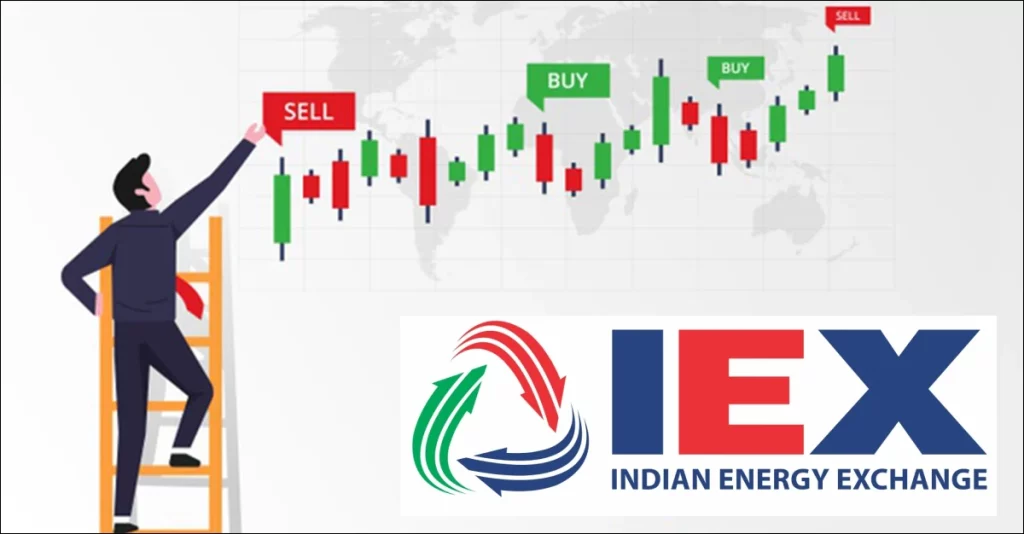IEX, or the Indian Energy Exchange, is like a buzzing marketplace for electricity in India. Imagine a platform where electricity generators, distribution companies, and even industrial consumers come together to buy and sell power. Sounds well sorted. Isn’t it? In short, IEX is an electronic power trading marketplace. IEX is a high-tech hub where bids and offers are matched, and prices are set based on supply and demand. Investors also trade renewable energy certificates, like tokens representing eco-friendly power. Does it seem a bit complicated? If yes, then this write-up will explain the IEX business model in super-easy terms. Also, you will get to know the working strategy and diverse revenue sources of the Indian Energy Exchange (IEX).

Keep Reading!
IEX: A Brief Overview
The acronym IEX stands for Indian Energy Exchange. It is a leading electronic trading platform for electricity and renewable energy certificates (RECs) in India. It was established in 2008 and is recognized as one of the country’s premier power exchanges. The other two key power exchanges of India are- PXIL (Power Exchange of India Ltd) and NPEX (National Power Exchange Ltd). All the Indian electronic system-based power trading exchanges are regulated by CERC (Central Electricity Regulatory Commission). It is similar to SEBI. Just like SEBI regulates NSE & BSE, the CERC regulates IEX, PXIL, and NPEX.
The key objectives of IEX are-
- To promote competition in the electric energy sector
- Facilitate the promote renewable energy
- Encourage market-based pricing mechanisms
- Provide a reliable & transparent platform for electricity trading.
Before diving deep into the IEX business model, let’s have a brief overview of the entity.
| Entity’s Name | Indian Energy Exchange Ltd. |
| Parent Company | Financial Technologies Group |
| Regulator | CERC (Central Electricity Regulatory Commission) |
| Type of Entity | Electronic Power Trading Marketplace |
| Founded in | 2008 |
| Services | Power Trading |
| Headquarters | New Delhi, India |
| Public listing | Publicly listed in BSE and NSE (IEX). |
| Products | Electrical Power and Energy Exchange |
| Subsidiaries | Indian Gas Exchange |
| Market Capitalization (June 2023) | Rs.10,942 crore |
| Revenue (March 2023) | Rs.400.85 crore |
| Expenses (March 2023) | Rs.85.40 crore |
| Net Profit/Loss (FY 22-23) | Profit of Rs.292.70 crore |
| Competitors | PXIL (Power Exchange of India Ltd) and NPEX (National Power Exchange Ltd) |
IEX has played a significant role in transforming the electricity market in India by introducing market-based mechanisms, enhancing price transparency, and promoting renewable energy. It has become an important platform for power market participants, contributing to the growth and development of the Indian power sector. In the upcoming sections, we will explore the IEX business model in detail.
Working Strategy: How Does IEX Work?

The following points describe the working strategy of IEX in detail.
1. Trading Platform
Being an electronic energy power trading marketplace, its working strategy revolves around providing a transparent platform for electricity trading. Also, it offers a trading platform for REC i.e. Renewable Energy Certificate. But can ordinary folks like us or any retailer trade for electricity on IEX? You may ask. The answer is a clear “NO.” Because you need to have a well-established infrastructure that requires tons of power load. Also, you need to have a huge capital i.e. Rs.1.5 crore. See, the electricity trade on IEX involves the physical delivery of electricity. So being a common man, where would you keep the tons of electric energy? It won’t be worth enough if you don’t own an established electrical power structure.
Now coming back to the point. Who can trade on IEX? We will explain it in the last section. But for now, remember that this marketplace is only for electricity corporations and boards related to energy. Thus, the electricity corporations trade on IEX to gain profits as well as to sell the products (electricity) at exclusive prices. The participants can trade i.e. buy or sell energy through a double-sided closed auction process. The platform facilitates the matching of bids and offers from buyers and sellers, enabling them to transact based on market-based pricing.
2. Who exactly are the market participants?
IEX’s platform involves the participation of various stakeholders in the electricity ecosystem. The participants of the IEX trade are-
- State Electricity Boards
- Power Producing Companies
- Power Transmission Companies
- Power Traders
- Electricity Generators (Conventional and Renewable)
- Electric Current Distribution Companies
- Industrial consumers
The presence of a wide range of participants possessing huge capital contributes to liquidity and a competitive marketplace.
3. How Does Trading System Work on IEX?

Let’s assume a scenario to understand the working system of IEX. Imagine there is a power cut in your city because all the electric power is finished. So, your city’s electricity board will log in to the IEX. Thereafter, it will search for another transmission company/ electricity board/renewable energy company that can offer electricity at a lower price. If it finds a suitable company then it will participate in the bidding process. Thus, your city’s electricity board will obtain electricity at an affordable price from a seller (Transmission Company). Also, the seller entity will make profits by selling electricity.
4. Products Offered
IEX offers the following range of products and contracts to meet the diverse needs of market participants-
| Products | Description |
| RTM (Real-Time Market) | Physical delivery of power within an hour of the bidding process. |
| TAM (Term-Ahead Market) | The participants can buy/sell electricity on a term basis i.e. with a duration of 11 days. |
| DAM (Day-Ahead Market) | Physical delivery of power within 24 hours of the bidding. Kindly, note that the 24 hours begin from 12 am (midnight) of the next day. The trade occurs in the 15-minute time block. |
| ESCerts (Energy Saving Certificates) | Represents 1 MWh (one megawatt-hour) of energy saved from a project. |
| REC (Renewable Energy Certificates) | Represents 1 MWh (one megawatt-hour) of electricity generated from a renewable energy resource. |
| Ancillary Services | Scheduling, dispatch, and settlement to support trading activities and ensure smooth electricity delivery. |
5. Features of IEX
5.1) Transparent Pricing

IEX follows a market-based pricing mechanism. Prices for electricity and RECs are determined through the interaction of supply and demand. The platform allows participants to view the prevailing prices and bids/offers, ensuring transparency and fair market discovery.
5.2) Rules & Regulations
IEX operates under the guidelines and regulations of the Central Electricity Regulatory Commission (CERC) and the Electricity Regulatory Commission (ERC) of the respective states in India. It adheres to these regulations to ensure fair trading practices and market integrity.
5.3) Clearing & Settlement
IEX provides a clearing and settlement mechanism to ensure the financial settlement of transactions executed on its platform. It facilitates the transfer of funds and delivery obligations between the buyer and seller, reducing counterparty risks.
5.4) Monitoring & Surveillance
IEX maintains a robust monitoring and surveillance system to detect any suspicious or fraudulent activities. It implements measures to maintain market integrity and prevent manipulation or abuse of the trading platform.
Revenue Sources: How Does IEX Make Money?

IEX makes money through diverse revenue sources described below-
1. Transaction Fees
The fees generated through the transaction is the main source of income for a trading platform. Do you remember the stock trading platforms like Zerodha, Upstox, or mStock? Those platforms also earn from transaction fees. Similarly, IEX generates a significant portion of its revenue through transaction fees charged to participants for utilizing its trading platform. These fees are typically calculated based on the volume or value of transactions executed by participants. The fee structure may vary depending on the type of contract or product being traded.
2. Membership Fees

IEX charges membership fees to market participants who wish to trade on its platform. These fees are paid by entities that become members of IEX by fulfilling the registration and eligibility requirements. Membership fees contribute to IEX’s revenue and cover administrative costs associated with maintaining the platform.
3. Fee from Value-added Services & Ancillary Services
In addition to its core trading platform, IEX offers various value-added services to participants. These services include market research reports, data and analytics, risk management tools, and training programs. Also, it provides ancillary services like scheduling, dispatch, and settlement services to support trading activities. IEX charges fees for all these services. Thus, it provides an additional revenue stream.
4. Selling of Market Data

The market data sales also generate a significant amount of revenue for IEX. This means it generates revenue by selling market data that includes historical price data, market trends, and trading volumes. This relevant information is crucial for market participants and research firms interested in the market insights of the energy sector. Because that data helps in market analysis and decision-making.
IEX may introduce new services or adjust its fee structure to adapt to market dynamics and regulatory requirements. This can broaden its revenue sources. In case, IEX releases any latest information/report, we will update you soon.
Marketing Strategies of IEX

Marketing strategy is a crucial part of IEX business model. See, the target customer of IEX is the huge capital-holding entities that need and produce electricity. And we common folks can’t trade on IEX. Therefore, IEX doesn’t require any common marketing strategies like television ads or digital marketing. So, in general, it focuses on creating awareness about its services. Its aim is to attract participants to its trading platform and position itself as a trusted and reliable marketplace. Here are some key marketing strategies employed by IEX-
1. Branding
IEX invests in building a strong brand image and positioning itself as a leading power exchange in India. It emphasizes factors such as transparency, efficiency, market-based pricing, and integration of renewable energy to differentiate itself from competitors.
2. Relationship Building
Building strong relationships with various stakeholders in the energy ecosystem is a key marketing strategy of the IEX business model. This includes establishing partnerships with the following-
- Power generators
- Distribution Companies
- Industrial Consumers
- Renewable Energy Associations
- Other relevant industry players
Collaborations and alliances help in expanding the participant base and fostering trust in the marketplace.
Conclusion
Indian Energy Exchange operates as a leading electronic trading platform for electricity and renewable energy certificates (RECs) in India. IEX business model revolves around providing a transparent and efficient marketplace for participants to trade electricity and RECs. The platform facilitates the matching of bids and offers, allowing market participants to transact based on market-based pricing.
IEX generates revenue through transaction fees charged to participants for utilizing its trading platform, as well as membership fees and value-added services. It offers a range of products and contracts, including day-ahead and term-ahead market contracts, RECs, and ancillary services. IEX focuses on branding and relationship building to attract and retain participants. Additionally, it provides market research, data analytics, and regulatory advocacy to enhance the trading experience.
Thus, IEX’s business model aims to foster competition, transparency, and the integration of renewable energy into the Indian power sector.

